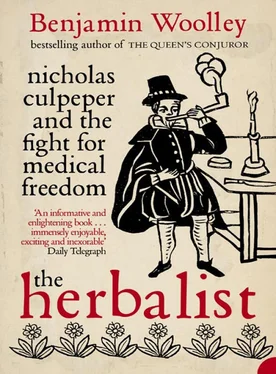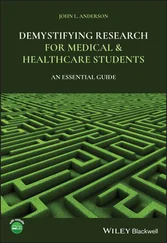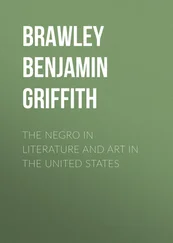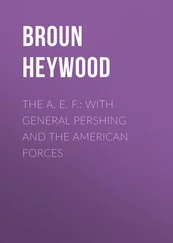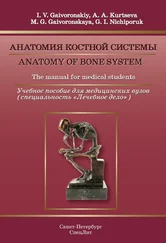He heard the women talk of the use of lady‘s mantle to revive sagging breasts, syrup of stinking arrach 37to ward off ‘strangulation of the mother’ (period pains), honeysuckle ointment to soothe skin sunburned by summer days in the fields. They talked of ‘kneeholm’ (‘holm’ is the Old English for holly), ‘dogwood’, ‘greenweed’, and ‘brakes’, the local names for butcher’s-broom, common alder, wold, and bracken. He discovered how every plant had its use, even one as predatory and toxic as brakes. Bracken was, and is, everywhere in Sussex. He would find it erupting in nearby woodland, wherever the undergrowth was disturbed by human activity, harassing stockmen who, during parched summers, would have to drive their animals away from grazing on its fronds, which are suffused with a form of cyanide. Yet the roots, bruised and boiled in mead or honeyed water, could be applied to boys’ itching bottoms to get rid of threadworm. A shovel-load of the burning leaves carried through the house would drive away the gnats and other ‘noisome’ creatures that ‘molest people lying in their beds’ in such ‘fenny’ places as the Sussex lowlands. 38
In the graveyard of his grandfather’s church he would pick clary, 39a wild sage, the leaves of which, battered and butter-fried, helped strengthen weak backs. Wandering further up the valley towards the neighbouring village of Barcombe, following the lazy course of the Ouse, negotiating the network of sluices and ditches draining off into the river, he would visit a clump of black alder trees standing next to the brooks and peel back the speckled outer bark to reveal the yellow phloem, or inner bark. Chewed, it turned spittle the colour of saffron; sucked too vigorously, or swallowed, it provoked violent vomiting; but boiled with handfuls of hops and fennel, the grated root of garden succory, or wild endive, and left for a few days, it turned into a bitter, black liquor which, taken every morning, drew down the excess of phlegm and bile that during winter accumulated in the body like the floodwater in the fields outside.
In these fields, he pored over the book of nature in the same fine detail as his grandfather combed the book of God inside. However, when Nicholas was ten, his days of wandering the countryside came to an abrupt end. Attersoll decided the boy needed a more formal education. He was packed off to a Sussex ‘Free School’ ‘at the cost and charges of his mother’ – probably the grammar school in Lewes, six miles away, or perhaps further afield, where he could no longer disturb his grandfather’s work.
Attersoll had also decided upon a vocation for the boy. ‘Every one must know & learn the duties of his own special calling,’ he wrote, and, like Attersoll’s more dutiful son William junior, Nicholas’s was to be the Church. At school, he would learn Latin, a prerequisite for an education in divinity, and a preparation for university. 40
Nicholas was sent to Cambridge in 1632, when he was sixteen years old. Little is known about his time there. He may have gone to his father’s college, Queens’, or to his grandfather’s, Peterhouse. 41In any case he would have followed the standard curriculum of the time, covering the seven ‘liberal arts’ – first the core subjects of grammar, logic, and rhetoric, followed by arithmetic, music, geometry, and astronomy. The way these subjects were taught rested on the authority of the text. Teachers would read out sections from set books, mostly by classical authors, all in Latin, elucidating where necessary. These were gospel. Students were not expected to question or challenge them, only to study and gloss them.
Nicholas’s mother had given him £400 for his ‘diet, schooling, and being at the university’. This was a lot of money, and it is not clear where she got it from – certainly not from the ‘poor labourer’ Attersoll, nor from her late husband’s estate (Nicholas senior’s short career more likely diminished than increased his £120 inheritance). Perhaps it was donated by a benefactor, a Culpeper relative such as Sir Edward’s son William, who had recently inherited his father’s title and estate and would later be described by Nicholas as a godfather figure. Or it may have come from a member of the local gentry to whom Attersoll dedicated his books, such as Sir John Shurley, owner of Isfield Manor.
Wherever it came from, £400 was enough for a comfortable life, leaving a sufficient surplus after board, lodging, and fees for a young student, later famous for his ‘consumption of the purse’, to develop an indulgence, such as smoking tobacco.
Nicholas’s passion for smoking was legendary. Even friends accepted that he took ‘too excessively’ to tobacco. It was the rage in 1630s Cambridge, attracting ‘smoky gallants, who have long time glutted themselves with the fond fopperies and fashions of our neighbour Countries’ and were ‘desirous of novelties’. Smoke-filled student chambers and taverns were an exhilarating change from the stuffy rooms of his grandfather’s cottage, and so were the apothecary shops that acted as the main outlets for tobacco, with their snakeskins and turtleshells in the window, and smells of incense, herbs, and vinegars inside.
Tobacco had been in the country since Elizabethan times. Its introduction to England is attributed to Sir Walter Raleigh, but it was already known before Raleigh’s voyages to America in the 1580s. In 1577, an English translation of an influential herbal by the Spanish physician Nicolas Monardes appeared under the poetic title Ioyfull Nevves out of the Newe Founde Worlde. An entry for ‘the Tabaco, and of his great virtues’ appeared prominently among a variety of exotic discoveries, such as ‘Herbs of the Sun’ (sunflowers), coca, and the ‘Fig Tree from Hell’. Monardes dwelt mostly on tobacco’s medicinal virtues (he claimed it was effective for treating headaches, chest complaints, and the worms), which he had exploited in his own practice in Seville. But he also included a detailed and scintillating report of a religious ritual performed by ‘Indian priests’ in America that had been observed by Spanish explorers. The priest would cast dried tobacco leaves upon a fire and ‘receive the smoke of them at his mouth, and at his nose with a cane, and in taking of it [fall] down upon the ground, as a dead man’. ‘In like sort,’ Monardes added, ‘the rest of the Indians for their pastime do take the smoke of the Tabaco , for to make themselves drunk withal, and to see the visions, and things that do represent to them, wherein they do delight … And as the Devil is a deceiver, and hath the knowledge of the virtue of herbs, he did shew them the virtue of this herb, that by the means thereof, they might see their imaginations, and visions, that he hath represented to them, and by that means doth deceive them.’ For this reason, Monardes placed the herb among a class of herbs ‘which have the virtue in dreaming of things’, hallucinogenics such as the root of ‘solarto’ (Belladonna or Deadly Nightshade), which, taken in wine, ‘is very strange and furious … and doth make him that taketh it dream of things variable’. Such properties encouraged English merchants with Spanish contacts to source samples of the herb for an eager market back home. The translator of Ioyfull Nevves , John Frampton, noted in the book’s dedication to the poet and diplomat Edward Dyer how the ‘medicines’ Monardes mentioned ‘are now by merchants and others brought out of the West Indies into Spain, and from Spain hither into England, by such as do daily traffic thither’. 42
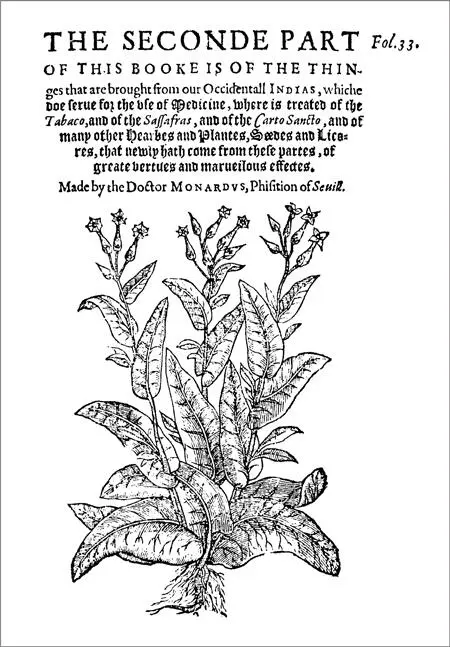
The tobacco plant featured in Nicolas Morandes’s herbal.
Читать дальше
